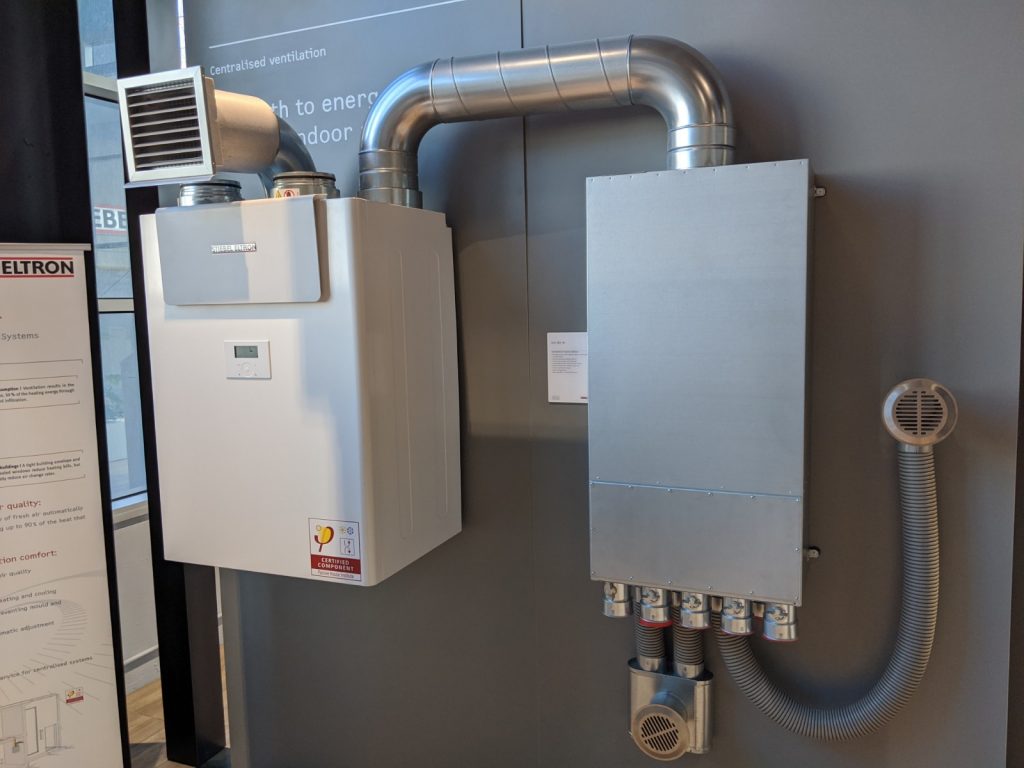How HRV Balances Indoor Climate
Wiki Article
The All-Inclusive Overview to the Uses of Heat Recovery Ventilation in Modern Structures
Heat Recovery Ventilation (HRV) systems represent a significant development in developing technology (HRV Heat Recovery Ventilation). They provide a method for trading stagnant interior air with fresh outdoor air while minimizing energy loss. This approach not just improves indoor air top quality yet additionally adds to power efficiency in both domestic and business buildings. Recognizing the various applications and benefits of HRV can reveal its critical function in modern design and sustainability efforts. The ramifications of this modern technology are worth checking out additionallyRecognizing Heat Recovery Ventilation Solutions

Numerous modern buildings focus on energy efficiency, understanding warmth healing air flow (HRV) systems is vital for enhancing interior air high quality and reducing energy intake. HRV systems function by moving warmth from stale interior air to incoming fresh air, properly preserving comfortable interior temperatures while lessening power loss. These systems contain a heat exchanger, fans, and ductwork that facilitate the circulation of air. Throughout wintertime, HRV systems capture and reuse warmth from the outbound air, while in summer season, they can aid cool inbound air. By continually exchanging air, HRV systems also minimize humidity and the focus of indoor contaminants. Appropriate installation and upkeep of HRV systems are necessary for their effectiveness and efficiency in enhancing overall structure performance and comfort.
Advantages of Heat Recovery Ventilation
Heat recovery ventilation systems supply various benefits that boost both power efficiency and interior air quality in contemporary structures. By capturing and recycling energy from exhaust air, these systems greatly minimize cooling and heating costs, bring about lower energy intake. They maintain a consistent circulation of fresh outside air, decreasing the threat of interior air pollutants and allergens. This constant exchange aids manage moisture degrees, protecting against mold development and making certain a much healthier living setting. In addition, HRV systems add to sustainability objectives by lowering general carbon footprints. Their capability to enhance ventilation without sacrificing thermal comfort makes them a useful enhancement to modern structure layout, promoting both economic and eco-friendly benefits.Applications of HRV in Residential Buildings
As homeowners increasingly focus on power efficiency and indoor air top quality, the applications of heat recuperation ventilation (HRV) systems in domestic buildings have actually become extra prevalent. HRV systems are especially beneficial in firmly secured homes, where preserving fresh air circulation is vital for protecting against wetness accumulation and interior pollutants. They successfully transfer heat from outbound stagnant air to inbound fresh air, lowering energy prices connected with home heating and air conditioning. Additionally, HRVs can improve convenience levels by managing humidity and temperature level. They are likewise adaptable for numerous domestic layouts, including single-family homes and multi-unit buildings. On the whole, incorporating HRV systems supports sustainable living methods while making certain a healthier indoor environment for occupants.HRV in Commercial and Commercial Setups
In industrial and industrial settings, the application of heat recovery ventilation (HRV) systems has become progressively critical for maximizing energy performance and keeping air high quality. These systems successfully transfer heat from exhaust air to inbound fresh air, decreasing the demand for additional heating or air conditioning. This not only lowers energy prices however also adds to sustainability efforts. Industries such as manufacturing, warehousing, and office structures benefit substantially from HRV systems, as they help control temperature level and humidity degrees, making sure a comfortable and effective setting. Moreover, HRV systems aid in getting rid of contaminants and excess wetness, boosting indoor air high quality. As guidelines around air quality become more stringent, the adoption of HRV innovation is most likely to expand, making it a vital element of contemporary industrial and commercial infrastructure.Future Fads in Heat Recovery Ventilation Modern Technology

Regularly Asked Concerns
Just How Does Heat Recovery Ventilation Impact Indoor Air Quality?
Heat recovery ventilation considerably boosts interior air top quality HRV Heat Recovery Ventilation by continually trading stagnant interior air with fresh exterior air while recouping power. This procedure lowers toxins, keeps perfect humidity levels, and guarantees a healthier environment for passengers.Can HRV Solutions Be Set Up in Existing Structures?
HRV systems can undoubtedly be set up in existing buildings. Retrofitting might call for alterations to ductwork and air flow designs, however it significantly improves energy effectiveness and indoor air quality, making it a viable alternative for older frameworks.What Maintenance Is Needed for HRV Systems?

Exist Specific Climates Where HRV Is Much More Efficient?
Heat recovery ventilation systems are especially efficient in climates with considerable temperature differences in between periods. These systems enhance energy performance by recouping warm from exhaust air, making them suitable for both chilly and reasonably cozy atmospheres.How Do HRV Equipments Affect Power Bills?

Report this wiki page